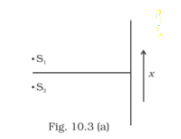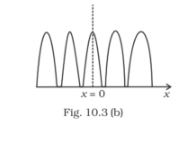Question:
Two sources S1 and S2 of intensity I 1 and I 2 are placed in front of a screen in the figure (a). The pattern of intensity distribution seen in the central portion is given by the figure (b). In this case which of the following statements are true.


(a) S1 and S2 have the same intensities
(b) S1 and S2 have a constant phase difference
(c) S1 and S2 have the same phase
(d) S1 and S2 have the same wavelength
Solution:
The correct answer is
(a) S1 and S2 have the same intensities
(b) S1 and S2 have a constant phase difference
(c) S1 and S2 have the same phase
Click here to get exam-ready with eSaral
For making your preparation journey smoother of JEE, NEET and Class 8 to 10, grab our app now.
